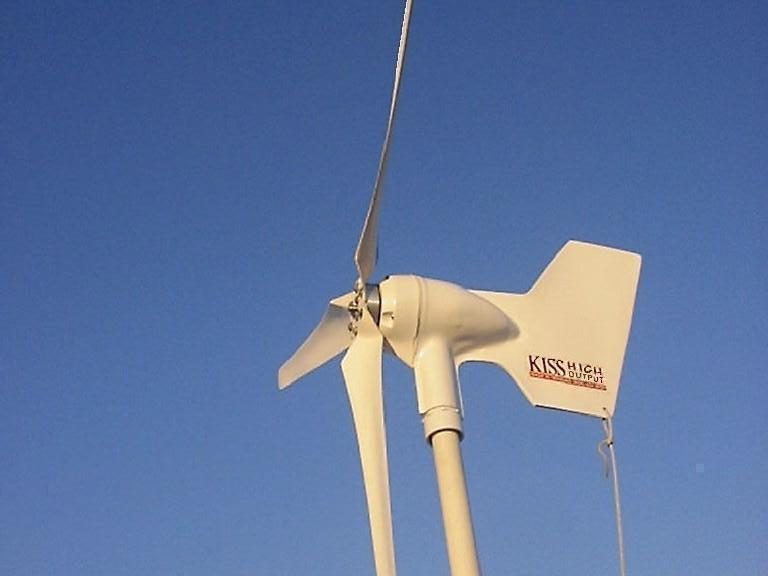Trouble with your KISS? I don’t mean your significant other. The wind generator…
IF IT DOEN’T TURN
No turning or excessive force required; 1) Check to make sure the switch is in the “on” position. The switch is located in the aluminum box with the rectifier. We call this box the control box. It is not a charge controller. 2) Disconnect at least two of the three wires that come from the generator to the switch (or rectifier). If the generator now turns freely, there is a short in switch rectifier or battery circuit. See my video, “how to test the KISS rectifier” .
If the generator still does not turn freely with the wires disconnected, then there is an electrical or mechanical problem. 1) With the blade assembly removed, and the wires disconnected from the switch or rectifier, measure the resistance between each pair of the three wires coming from the generator. Select the lowest resistance scale on your meter. Because we will be measuring a very small amount of resistance, measure the resistance of your test leads. Some meters will show zero, but if yours shows some number, then that number needs to be subtracted from the resistance reading. The resistance readings should be 0.5 to 0.6 ohms for Trinidad KISS generators, and 0.4 to 0.5 ohms for US made KISSes. If the reading is the same as when your touched the test leads together, there is a short. It could be in the wires going up to the generator or inside the housing. Either case, it needs to come down.
IF IT TURNS BUT DOES NOT PRODUCE ENERGY;
With the blades spinning, and everything hooked up, measure the A/C voltage between each pair of the three wires coming from the generator. In 6 – 8 knots of wind (at the generator, not at the top of the mast) you should see about 14 – 18 volts. Higher voltage indicates an open in the circuit, check the fuse. Test the rectifier. Look for corroded terminals. Lower voltage indicates a problem in the generator. Lower voltage indicates high resistance between the three wires coming from the generator or magnets that have lost strength. Magnets can loose strength from overheating.
